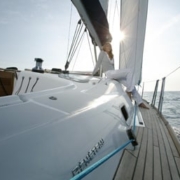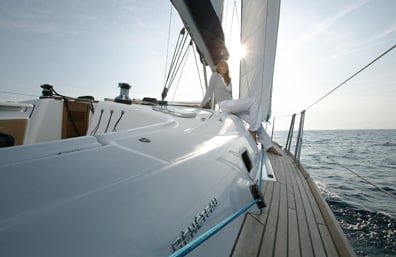The Deck – Getting Familiar with a Charter Boat
Gaining knowledge about the boat, its systems, and its equipment is a great starting point for any sailing adventure. It only makes sense that to effectively operate a vessel: we must know where all of its components are located and how they work. I recommend starting on deck by examining the rigging, sails, and layout of deck hardware. Get a feel for all sail controls – halyards, sheets, boom vang, clew outhaul, reef lines, jib furling line, etc. These can all be run in a variety of manners between different vessels, but we must become familiar with the arrangement on this vessel. Follow the colors of the lines back to the control point. Mostly they will be labeled but don’t wait until you’re underway to try to figure it out. Get familiar with the engine readouts, shift controls, cockpit electronics displays, and ensure that all safety gear is readily available. Use this examination to decide such things as where to deploy jack lines for safe maneuvering, how the mainsail is reefed, and how to furl/drop sails at the day’s end.
Make note of the anchor(s) on the bow rollers; how many, are the anchor lines chain-nylon rope or all chain, and whether they’re hoisted by hand or with a windlass. How much anchor rode is there? Is the windlass manual or electric? Is it operated by hand or a foot pedal?
On deck, notice any potential dangers, loose screws, sharp edges, or untaped split pins where the crew can cut themselves. Notice hatches where you could fall through. Be especially diligent about ensuring all the crew know the easy potential of falling through deck hatches.
After you gain a feel for the topsides, go below to continue the process. We’ll examine a few of the systems on board with which charter skippers must become familiar, beginning with the engine.







